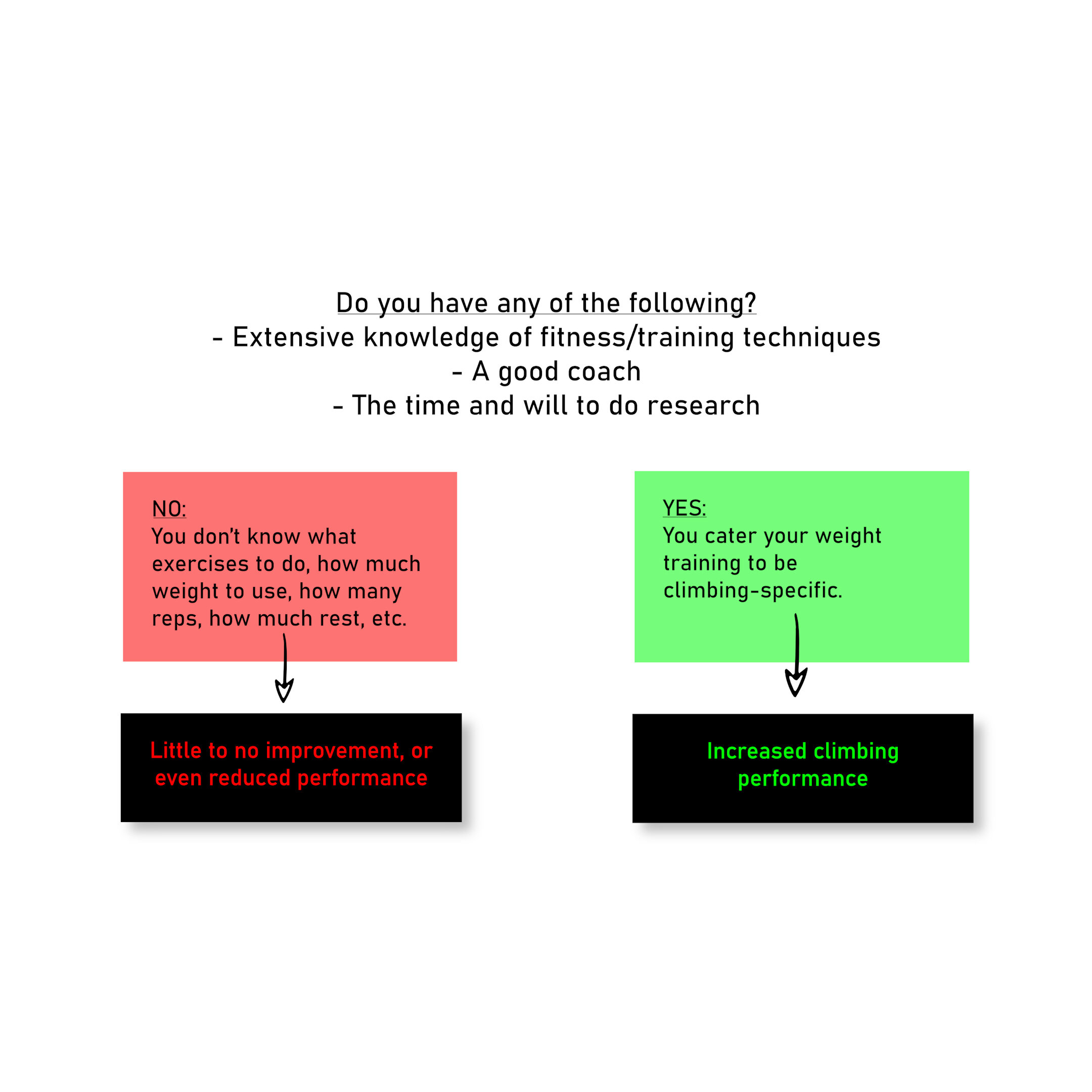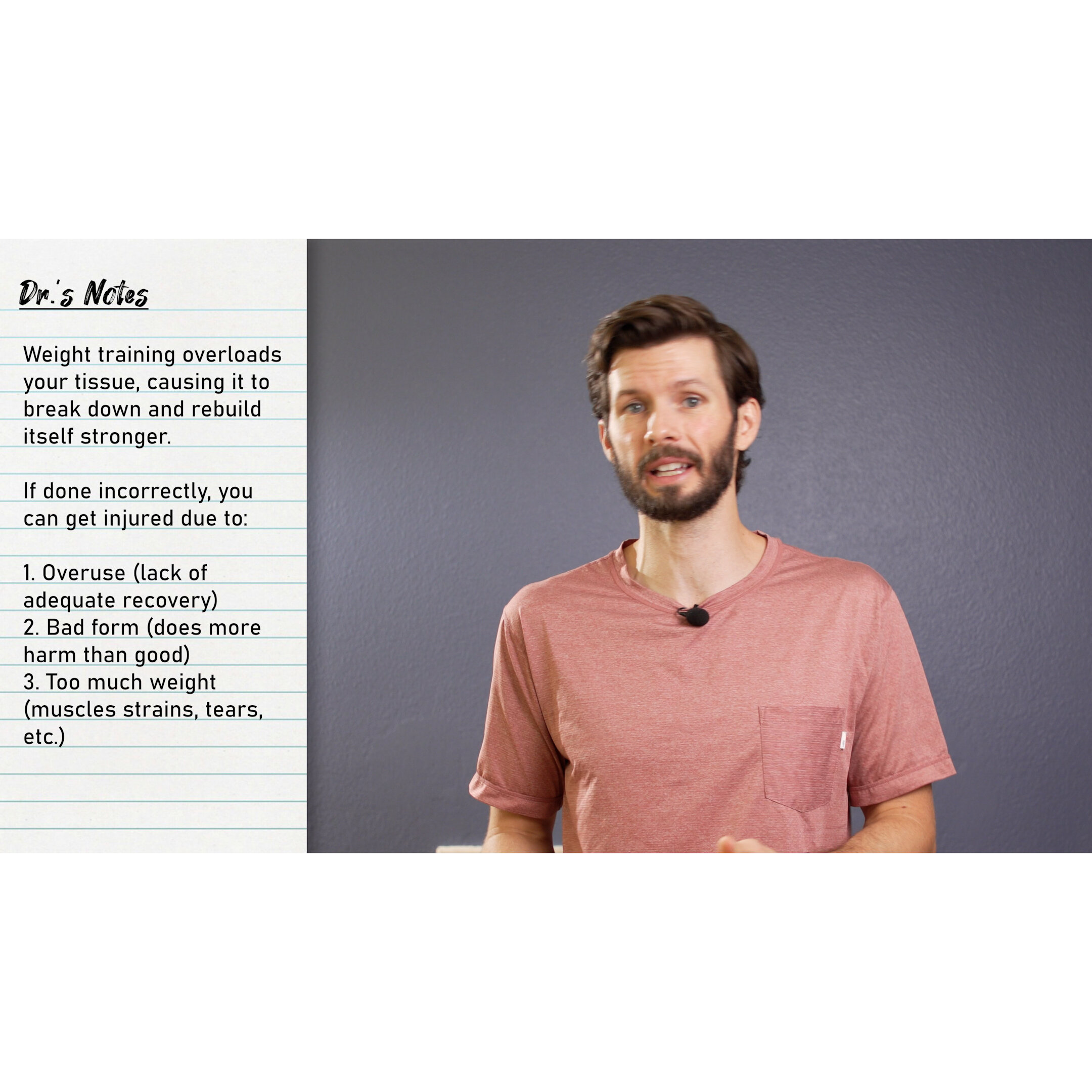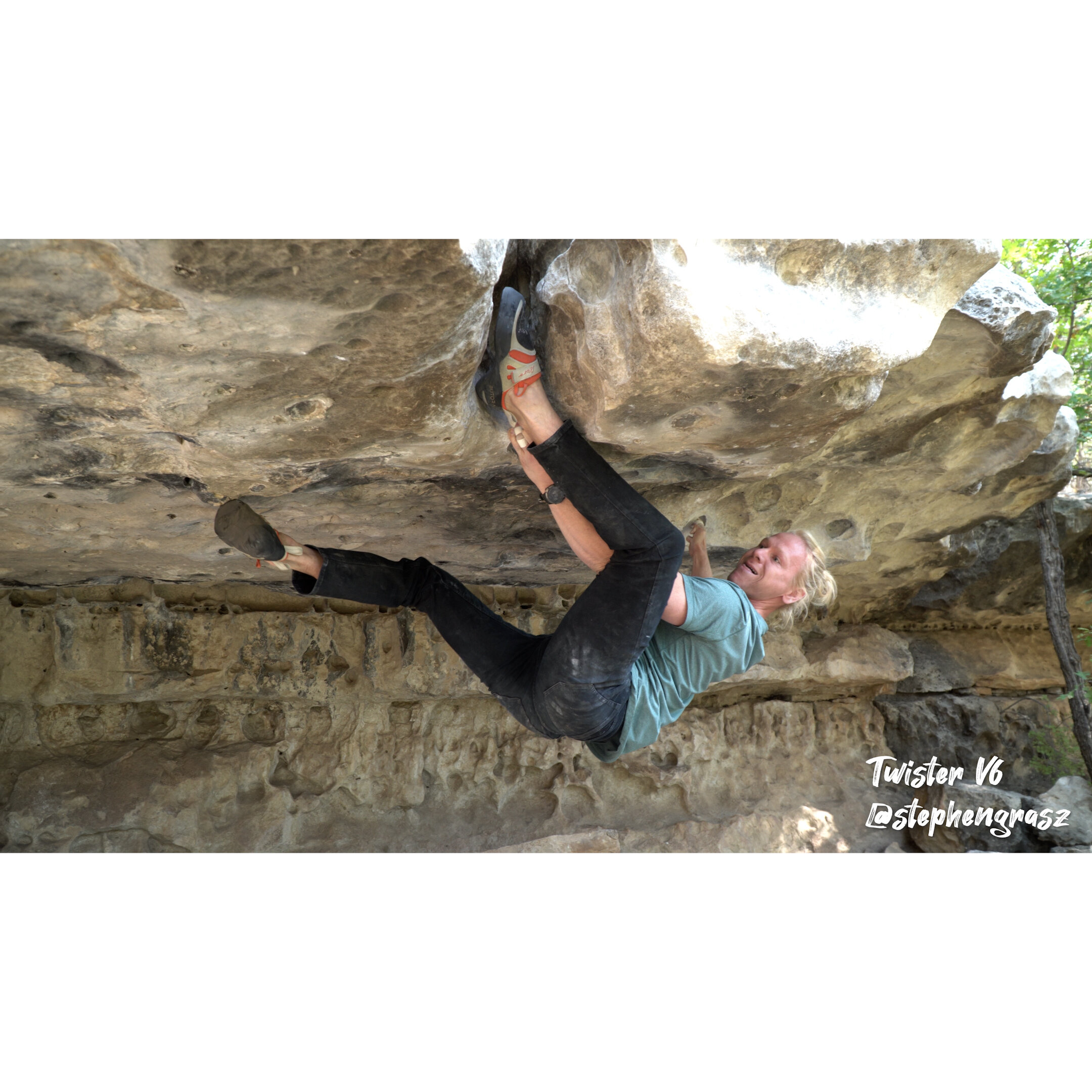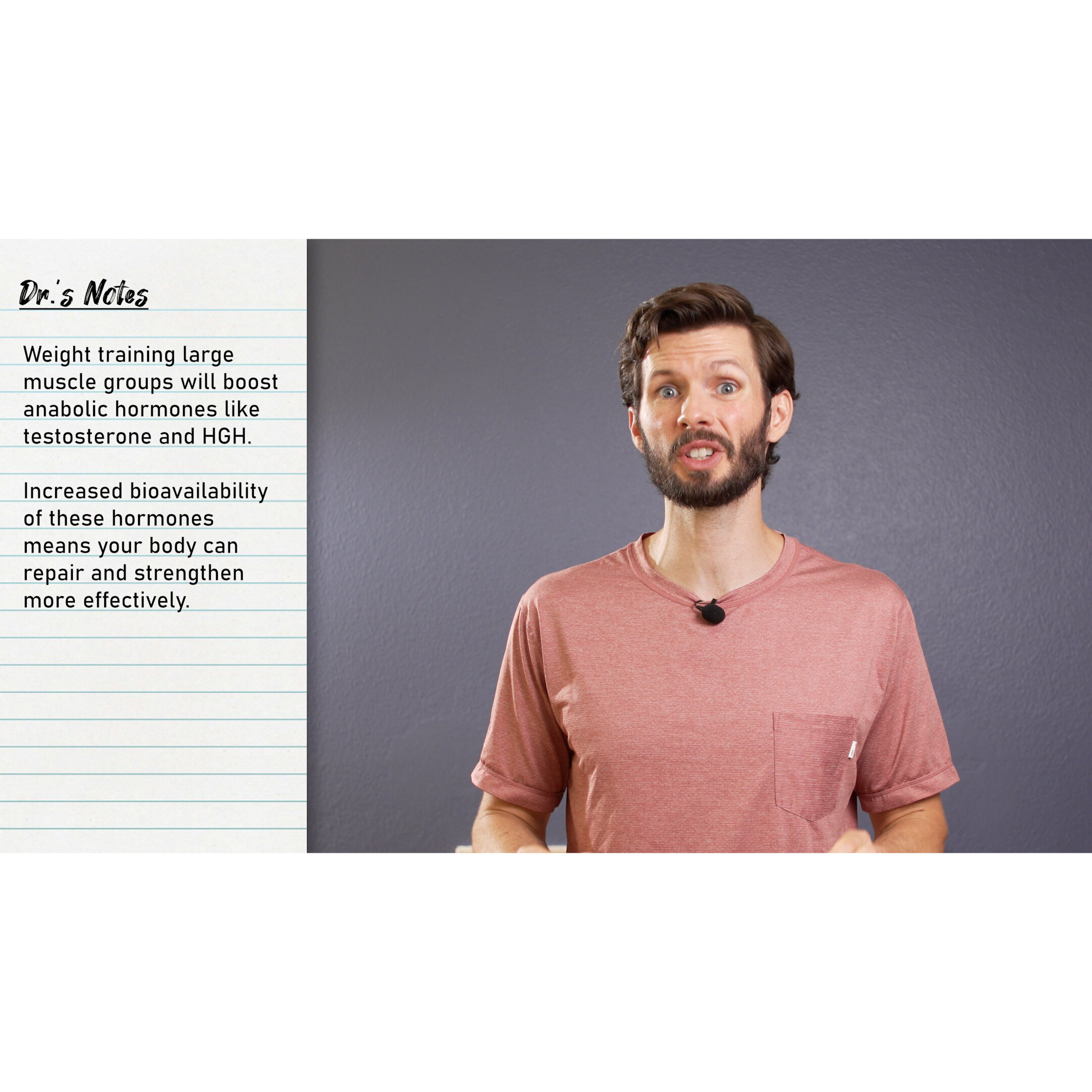Should Climbers Weight Train? My Perspective as a Doctor of PT
Hooper’s Beta Ep. 59
Intro
Should climbers weight train? Will it make you better at climbing? Or will you just gain mass and feel all heavy? Will it make you more prone to overuse injuries? Or will the added strength help prevent you from getting injured? Shouldn’t you be spending your time climbing and not lifting weights? But then how are you going to get stronger?
Just like running, this is a hotly debated and often misunderstood topic in the climbing community. So in this video, we’re going to present the top 3 reasons FOR and AGAINST resistance training for climbers. And we’re going to base those reasons on WHAT? Science!
After this video you’ll have all the info you need to decide for yourself whether or not weight training is appropriate for you.
Be sure to stay tuned until the end as I’ll finish with my recommendation on IF you should weight train, HOW you should incorporate it into your routine (if you decide to), and some tips related to climbing and weight training.
Let’s start with the reasons against weight training as a rock climber.
3 Reasons AGAINST Weight Training as a Rock Climber
Reason #1: It’s NOT SPECIFIC
The first reason against weight training for climbers is that it is often not specific for climbing. Don’t get me wrong, weight training definitely CAN be effective, specific training for climbing, but only if done right. And therein lies the problem: most people don’t have the training, guidance, or hours and hours of free time for research to do it right. Basically, most people don’t know how to weight train in a way that will specifically help them with climbing. This will result in the individual experiencing little to no gains in performance or may even experience a worsening of their climbing performance as they are allocating their resources inappropriately.
This is sometimes simply because it can be hard to find the right information online, you don’t have the proper training, and/or you don’t have the time to do thorough research. You just go ahead and do what your friend Chad does, because Chad can do a handstand and you can see the vein in his bicep so he must know what he is talking about.
Specificity in weight training is important. Understanding that if you’re a boulderer working on problems that last a few movements, your weight training should be tailored to that. You should be doing higher resistance, lower repetition movements. On the other hand, if you’re a sport climber working on a long route, your weight training should be tailored to more endurance and/or power endurance based weight training. If you are not incorporating that specificity in your program, you are training the incorrect energy systems and it will likely not help your climbing performance.
Another issue with this is not picking weight training exercises that specifically help with your climbing. I see a lot of climber bros doing bicep curls with heavy weight. Why? Why are you independently training this muscle when it works in conjunction with so many other muscle groups while climbing? You’re better off doing an inverted row which uses body weight and places you in a position to specifically train the correct muscle groups for climbing (and still makes the biceps look nice). Doing bicep curls in isolation on the other hand, may cause an overuse injury, or will simply take away from your climbing performance because now you wrecked your biceps and can’t do your cave training effectively, which reduces your climbing performance.
Speaking of an overuse injury, this brings us to our second reason against weight training and rock climbing: it can be risky.
Reason #2: It Can BE RISKY
Weight training is designed to progressively overload your tissue by adding enough force to create a new adaptation. If you don’t know what you’re doing with your weight training, you can end up with an overuse injury, an injury due to improper form, and/or even a “too stoked too quick” injury, i.e., you increase your weights far too quickly and damage your tissue.
Let’s look back at that bicep curl we mentioned. This is a good example of two ways in which we can cause ourselves an injury. One, you are simply adding to the force that this particular muscle group has to tolerate with the combination of weight training and climbing. Two, you are reducing the rest/recovery time for that muscle group if you aren’t adjusting your program to allow you to add that specific move in.
This can be applied to not just biceps curls, it’s just an example. Weighted pull-ups is another example. Weighted pull-ups are a common training tool for climbers, BUT, as we mentioned, if you are not adjusting your climbing, you are placing a high amount of strain/stress to your shoulders and elbows, and not allowing adequate rest/recovery. Imagine climbing 4x/week. You’re already at the capacity of many of those muscle groups to recover. Now you add in weighted pull-ups, and you have even less rest time on top of even more damage to recover from. This is a mistake that can lead to an injury.
Weight training is meant to supplement your climbing, and if you get hurt from your weight training and you can’t climb as a result, you’re going in the wrong direction and that training has thus subtracted from your climbing performance rather than added to it. It is taking you out of climbing and robbing you of a valuable training aspect of rest. Which brings us to our 3rd reason against weight training and climbing, time!
Reason #3: It dips into your most valuable resource, TIME!
The third and most important aspect against weight training and climbing is simple: TIME!
This was also my number one reason in our video about running and climbing. Time is a constant battle. Weight training takes away from adaptation time, from rest time, and most importantly, it takes away the time you have to climb.
The biggest gripe I have with weight training and climbing is that people often spend too much time weight training, and not enough time climbing. After all, the best training you can do for climbing is climbing. 75-80% of your available training time should be dedicated to climbing. You can fill the other 20-25% with training for climbing or other activities, but if you want to get better at climbing, you need to climb or do very specific climbing based activities.
Climbing is a skill sport. Let’s not forget that. Oftentimes, weight training gets overvalued and people spend too much of their time weight training and not enough time actually climbing. Climbing is something that needs to be practiced. You need to reform your skill, and you need to be healthy and fresh to try hard while climbing. If your weight training is taking away from time to climb, you aren’t doing what you absolutely need to climb better.
Let’s talk more about that concept of being healthy and fresh while trying to climb. Too much weight training also can reduce your rest and recovery time, which means you may not be at your optimum performance level, which means you won’t be able to push the limits of your climbing. If you cannot put max effort into climbing because you are doing too much weight training, you’re not likely to advance in your climbing.
Remember, time is also important in relation to recovery. If you are not allowing yourself appropriate rest and recovery time yet you are still trying to push hard with climbing, you are likely setting yourself up for an injury. Your body needs time to recover. Don’t sacrifice this valuable time with excessive weight training.
Finally, as we mentioned as well in the cardio video, our bodies only have a certain capacity for adaptation. To get better at climbing, we want to focus our time and attention on adapting to the changes the climbing demands our bodies to adapt to. Think about it like this, if you are doing 30 different activities, you will never be great at any of those activities. You’ll be mediocre. If you focus on 2-3 different activities instead, you’ll get much better at those. Our bodies only have so much time and ability to adapt to training. If you are spending too much time weight training, you are robbing yourself of that time for climbing adaptations. This goes back to what I said earlier, 75-80% of your time should be climbing, 20-25% to training for climbing or other activities.
In Summary
Your time is valuable, and needs to be interested properly if you want to climb harder. If your weight training is not specific, if it is putting you at injury risk, and if it is taking away from your rest and recovery time, you are not improving at climbing, you’re only slowing down your progress.
3 Reason FOR Weight Training and Climbing
Reason #1: Weight Training Will Improve Strength
Now for the reasons FOR Weight training! The first reason is that you will Improve strength which can help you pull harder, build body awareness, learn how to control tension, and it won’t make you bulk out!
OK I have to start with the last part. Yes, I said it, weight training won’t bulk you out (if you do it right). This is a huge mistake people make when considering weight training with their rock climbing program. I hear it far too often that “I don’t want to get big”. This is not a jab at women, I know plenty of men who say this as well because they are concerned with gaining too much weight. This is a universal issue and is a misunderstanding. There is a significant difference between using weight training for strength and weight training for hypertrophy. Hypertrophy training will make you larger. Think high volume, high reps, moderate intensities. An example? Cyclists!! Look at the best cyclists in the world. HUGE LEGS! What are they doing? High volume and moderate (and of course sometimes high) intensities. Strength weight training, on the other hand, is meant to build strength and not add a lot of weight. Think low repetition, lower volume, higher intensity. You can get stronger and not add weight. It’s just about knowing that subtle difference. Low rep and high intensity leads to strength gains. High volume/rep and moderate intensity leads to getting swoll.
OK, so back to the other benefits. Weight training can help you learn how to gain STRENGTH, build body awareness, and learn how to control tension without adding a lot of weight. I like to look at the deadlift for example. This exercise, when done appropriately, is amazing! It is a good example of body awareness and tension. This exercise forces you to engage your scapular retractors, your core, your glutes, and your hamstrings, all with one movement. You can even increase the weight you lift with this while not gaining weight yourself! A lot of the improvements from this weight lift will simply be learning how to control all of the tension between those muscle groups which will make you lift more weight more efficiently without actually getting heavier.
Take a second and think about how being able to control all of that tension can help you with climbing.
With dead lifts, and with strength weight training exercises in general, I recommend a negative regression set. Meaning. Start with your first set of say 8 reps with a lower weight for your warm up. But, by your 5th set, you may be doing just 2 reps of a heavier weight. So the weight goes up as the reps go down. This will not trigger hypertrophy. This will just improve your strength and improve your ability to control tension.
Reason #2: Improved Mental and Physical Health
Reason #2 for weight training is the dual positive effect on your mental and physical health.
There is plenty of research out there about the positive effects of exercise and mental health. The research repeatedly suggests that regular physical activity can significantly improve mental health and lessen symptoms of depression anxiety and stress.
The research about the mental health components tune into the distraction and mastery hypothesis. It suggests that exercise provides us a “mental time out” from worrying, stressful, or negative thoughts. The mastery hypothesis suggests that completing an important or effortful task brings about a feeling of mastery which can elevate mood. Think about it. Doesn’t hitting a new PR on your weight training make you feel great? Feel accomplished? Feel like you’re the toughest mofo in the gym?
In addition to that. Just climbing 100% of the time can be unhealthy as well. It can lead to your hobby feeling like your job. Doing just 1 thing 100% of the time can lead to burn out. So, complimenting it with some weight training can be a much needed reprieve, just like is discussed with the distraction hypothesis.
Now, another beautiful component of weight training is the physical benefit. The physical effects of exercise include reduction of blood pressure, weight loss, and prevention of chronic diseases. Even cooler? Weight training, especially of large muscle groups, will boost anabolic hormones such as testosterone and growth hormones 15-30 minutes after weight training exercises.
Testosterone and growth hormone are anabolic hormones, meaning they are meant to help BUILD. Having an increased bioavailability of these two hormones means that there is the potential to trigger additional building of tissue throughout your body, specifically where there is damage. This can mean faster healing and quicker recovery times.
BAM! Weight training is good for you mentally and physically. OK, so what else? The final reason is that weight training can increase throughout your body which can lead to decreased injuries.
Reason #3: Increasing Stability = Decreased Injuries
Reason #3: Increasing stability equals decreasing injuries.
Now, this is an important final topic, because earlier we discussed how weight training can cause injuries. If you do not have good training and education on weight training, as we mentioned, it can be risky. BUT, if you do it correctly, you can prevent injuries.
One easy example I like to look at is with our shoulders. We become hyper focused on the strength of our hands and forearms that we forget the importance of strong shoulders. In fact, I may see more shoulder injuries than I do pulley injuries in my practice! Not training your shoulders is a mistake that can be avoided with proper weight training. In fact, they have shown in research that an imbalance in external to internal strength of the shoulder can lead to injuries of the shoulder due to imbalances. This is extremely common in overhead athletes. It causes a biomechanical imbalance that could simply be avoided with proper weight training. If you can avoid injuries, you can continue to climb. If you can continue to climb, you’ll get better at climbing. So, do your specific, climbing-related weight training, and enhance your climbing.
Strength training also increases the force capacity of your muscles. Basically, it means that it can sustain higher amounts of force before it would fail. Sounds simple, right? If it can handle higher levels of force, it is less likely to suffer an injury. Think about climbing and your foot blowing off. All of the sudden, you have a significant amount of load on your body. If it has training, it can handle that. If it doesn’t, you may end up getting injured.
In Summary
Weight training can help you climb better. It can keep you on the wall rather than on the injured reserve, it can boost your healing, boost your mental status, and will help you pull harder by building more tension and learning more body awareness.
MY RECOMMENDATION
Do some weight training, but keep your focus on climbing. 75-80% should be climbing, 20-25% to training for climbing
Do large muscle groups to optimize your time and gain the hormonal benefits
This may be dead lifts, squats, pull ups or more.
Focus on the outcome of the strength training rather than the sweat, fatigue, or feeling “gassed” at the end.
Do some research or find a climbing coach and find out what style of training you should be doing based upon your style of climbing.
This can also be helpful to prevent yourself from making a mistake with your training which can cause an injury.
I personally think that the power company podcast and Steve Bechtel at climbstrong are good resources.
There isn’t just one perfect way to weight train. Everyone's a little different. Try to be specific and support your climbing, but that will be different for everyone.
Resting is OK. If you’re sore, you don’t need to train more, and you don’t need to pick a new muscle group to work on. Focus your efforts on getting stronger for climbing.
What do I do?
Woohoo, to my favorite part, my own opinion! I know you all prefer that over that sexy science anyways…. So, if you haven’t figured it out yet, I do love weight training, BUT I don’t do a ton of it. I focus on climbing and movements related to climbing. Does it feel good throwing some weight around and not ONLY climbing all the time? Absolutely. BUT! My focus is and will remain on climbing harder, so I eliminate what will not help me and I focus on what will. So, here are my recommendations for weight training and climbing.
And that’s it! Those are my top 3 reasons FOR and AGAINST weight training for climbers! I hope this will help you in your journey and figuring out your training program.
Until next time…
Weight Train? Don’t weight train? Climb *thumbs up* Send. Repeat.
RESEARCH
TITLE
The effects of high resistance–few repetitions and low resistance–high repetitions resistance training on climbing performance
CITATION
Hermans E, Andersen V, Saeterbakken AH. The effects of high resistance–few repetitions and low resistance–high repetitions resistance training on climbing performance. European Journal of Sport Science. 2017;17(4):378-385. doi:10.1080/17461391.2016.1248499
KEY TAKEAWAYS
The training groups reduced their climbing sessions during the intervention compared to the CON group (p = 0.057–0.074). In conclusion, HR-FR and LR-HR training programmes demonstrated an 11% and 12% non-significant improvement in climbing performance despite a 50% reduction in climbing sessions
TITLE
The effects of 8 weeks of two different training methods on on-sight lead climbing performance
CITATION
Philippe M, Filzwieser I, Leichtfried V, et al. The effects of 8 weeks of two different training methods on on-sight lead climbing performance. J Sports Med Phys Fitness. 2019;59(4):561-568. doi:10.23736/S0022-4707.18.08399-8
KEY TAKEAWAYS
Our findings demonstrated that climbing-specific ME, as well as MH resistance training, improved on-sight lead climbing performance in a similar setting to a world cup
TITLE
Physical and Physiological Determinants of Rock Climbing
CITATION
MacKenzie R, Monaghan L, Masson RA, et al. Physical and Physiological Determinants of Rock Climbing [published online ahead of print, 2019 Oct 14]. Int J Sports Physiol Perform. 2019;1-12. doi:10.1123/ijspp.2018-0901
KEY TAKEAWAYS
Shoulder power and endurance majorly determines maximal climbing. Finger, hand, and arm strength, core-body endurance, aerobic endurance, flexibility, and balance are important secondary determinants.
Firstly, in males, 50% of the assessed parameters correlated with climbing ability. These included, in rank order, shoulder endurance, power and power-endurance, hand and finger strength, hip flexibility or range of motion, lower- and upper-arm strength, core-body endurance, aerobic capacity, hamstrings/lower-limb and lower-back flexibility, and open-hand finger strength. In females, fewer parameters (20%) correlated with climbing ability. These included, in rank order, shoulder endurance and power, lower-arm strength, balance, aerobic capacity, and arm span (“ape index”), whereas in contrast to males, power-endurance, finger strength, upper-arm strength and flexibility were less important.
On further examination, maximum pull-ups, arm cranks, and bent-arm hangs accounted for 59%, 14% and 4%, respectively, of the variation in males, while bent-arm hangs and pull-ups accounted for 54% and 8% in females, whereas finger and arm strength also tended to contribute to climbing ability in male
It remains unknown why female climbers relied on fewer parameters and were less determined by those, but a possibility is they relied more on factors not assessed here, e.g. technique. Nonetheless, our approach and analysis represents a step forward for identifying key performance indicators for climbing and thereby informing specific cohorts on training strategies, compared to previous studies where climbing ability has been modelled with less resolution, precision and specificity
The identified determinants and most of the parameters that correlated with climbing ability are trainable and should receive attention in training programs. In a small-scale proof-of-principle training study, we demonstrated that improving the main determinants also improved climbing ability by 2-3 grades. This training was performed in conjunction with other climbing training, which we did not interfere with.
body weight and dimensions do not stop progress in climbing. These applications relate to all climbers regardless of ability or sex, but may especially pertain to those that climb relatively short, but steep routes.
TITLE
Hormonal responses and adaptations to resistance exercise and training
CITATION
Kraemer WJ, Ratamess NA. Hormonal responses and adaptations to resistance exercise and training. Sports Med. 2005;35(4):339-61. doi: 10.2165/00007256-200535040-00004. PMID: 15831061.
KEY TAKEAWAYS
Resistance exercise has been shown to elicit a significant acute hormonal response
Anabolic hormones such as testosterone and the superfamily of growth hormones (GH) have been shown to be elevated during 15-30 minutes of post-resistance exercise providing an adequate stimulus is present
It has been suggested that large muscle-mass exercises be performed prior to small muscle-mass exercises.[1]The hypothesis is that performance of large muscle-mass exercises (i.e. squat, deadlift, power clean) early in the workout may produce significant elevations in testosterone, which potentially may expose smaller muscles to a greater response than that resulting from performance of small muscle-mass exercises only.
Protocols of sufficient intensity and volume have been shown to produce substantial elevations in total testosterone
Disclaimer:
As always, exercises are to be performed assuming your own risk and should not be done if you feel you are at risk for injury. See a medical professional if you have concerns before starting new exercises.
Written and Produced by Jason Hooper (PT, DPT, OCS, SCS, CAFS) and Emile Modesitt
IG: @hoopersbetaofficial









